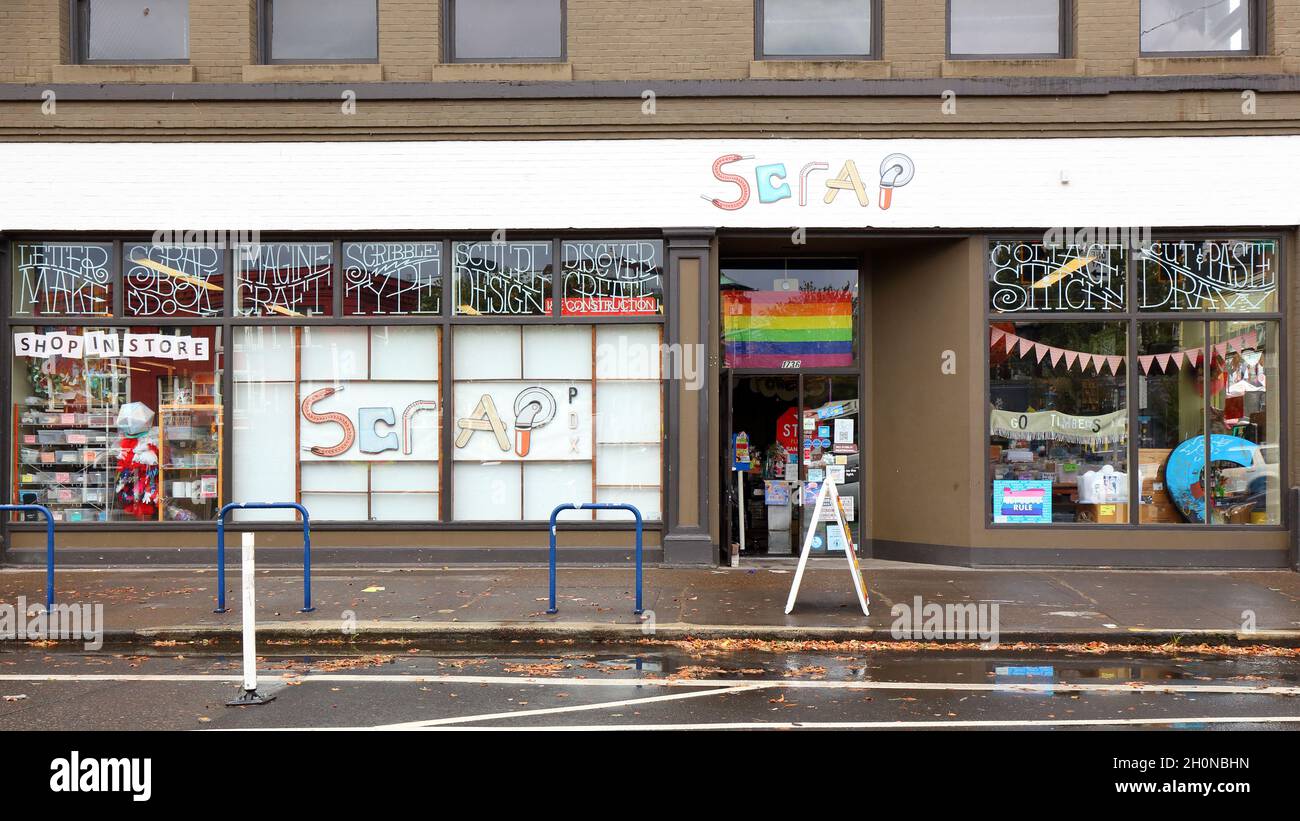Is Portland, Oregon, facing a reckoning with its past, one that involves the difficult work of dismantling and rebuilding? The dismantling and repurposing of "scrap pdx," whether it be physical structures, discarded materials, or outdated practices, is undeniably reshaping the city's landscape and its future, and has become one of the most pressing issues.
The term "scrap pdx" itself is multifaceted. It encompasses the tangiblethe metal, wood, and other materials salvaged from demolished buildings and construction sites. But it also extends to the less visible forms of waste: the economic models that no longer serve the community, the social structures that perpetuate inequality, and the environmental practices that are unsustainable. The city, known for its progressive spirit and commitment to sustainability, is increasingly grappling with the complexities of dealing with its "scrap"and attempting to transform it into something new.
The impetus for this transformation is multi-pronged. First, theres the undeniable pressure to mitigate climate change. Portland, like many cities, is striving to reduce its carbon footprint. Repurposing materials, recycling waste, and embracing a circular economy are all crucial strategies in this effort. Secondly, theres a growing recognition of the need for social justice. The city's past, marred by redlining and other discriminatory practices, has left a legacy of inequity. Addressing this "scrap" requires a commitment to dismantling systemic barriers and creating a more inclusive society. Finally, theres the economic imperative. Finding new uses for discarded materials, creating new jobs in the circular economy, and fostering innovation can all contribute to a more resilient and prosperous future.
To examine the landscape and it's current situation, We must examine the various elements that contribute to the overall "scrap pdx" concept.
The Physical Scrap: This is perhaps the most visible manifestation. Construction and demolition projects generate vast quantities of waste. Historically, much of this material ended up in landfills. However, a growing number of businesses and initiatives are dedicated to salvaging, repurposing, and recycling these materials. This includes metal recyclers, woodworkers who create furniture from reclaimed lumber, and companies that specialize in deconstructing buildings to salvage valuable components.
One key player is The ReBuilding Center, a non-profit organization dedicated to deconstruction, salvage, and the reuse of building materials. Their work exemplifies the potential of "scrap pdx" to contribute to a more sustainable and equitable future. They deconstruct buildings, carefully removing materials for reuse, which diverts waste from landfills and provides affordable building supplies.
The Economic Scrap: Beyond the physical realm, "scrap pdx" also encompasses outdated economic models. The city is home to a vibrant startup scene and a growing interest in social enterprises. These businesses are often focused on sustainability, social justice, and community development. They are, in essence, attempting to transform the "scrap" of traditional capitalism into something new. This includes businesses that focus on local sourcing, fair wages, and environmental responsibility.
The Social Scrap: Portland, like many cities, faces challenges related to social inequality, discrimination, and systemic biases. Addressing this "scrap" requires a commitment to dismantling these structures and creating a more inclusive society. This involves efforts to combat homelessness, address racial disparities, and promote affordable housing. The city is actively working to address issues of inequality and historical injustice, and these issues can be called the "scrap" that Portland needs to get rid off.
The Environmental Scrap: This is a broad area encompassing various issues related to pollution, resource depletion, and climate change. Portland, with its reputation for environmental consciousness, is actively working to minimize its impact. This includes efforts to reduce greenhouse gas emissions, improve air and water quality, and promote sustainable transportation. The city's commitment to reducing waste and promoting recycling is also part of the effort to address the environmental "scrap" of unsustainable practices.
The challenges are significant. There's the logistical hurdle of sorting and processing vast quantities of materials. The economic viability of some recycling and repurposing projects can be uncertain. There's also the ongoing need for education and awareness among residents and businesses. But the momentum is building. The city's commitment to sustainability, coupled with the ingenuity and determination of its residents, suggests that "scrap pdx" is not simply waste, but an opportunity.
The Future of "Scrap PDX":
The future of "scrap pdx" depends on a combination of factors. Continued investment in recycling infrastructure is essential. The development of new technologies for sorting and processing materials is crucial. Stronger regulations and incentives to promote sustainable practices are needed. And, perhaps most importantly, theres a need for a shift in mindset. Viewing "scrap" not as a problem to be discarded, but as a resource to be utilized, is key. This requires a cultural shift, an understanding that waste can become a valuable asset.
Moreover, this includes initiatives like the City of Portlands Climate Action Plan, which sets ambitious goals for reducing greenhouse gas emissions, promoting renewable energy, and improving energy efficiency. The plan also emphasizes the importance of reducing waste and promoting a circular economy.
Ultimately, the story of "scrap pdx" is a story of transformation. Its a story about a city grappling with its past, acknowledging its challenges, and striving to create a better future. Its a story about innovation, resilience, and the enduring power of human ingenuity. It's a story that is still being written, and one that promises to be both challenging and inspiring.
In conclusion, the concept of "scrap pdx" is a dynamic one. Its a conversation of what the city wants to be, by its environment, it's economy, and its society.


